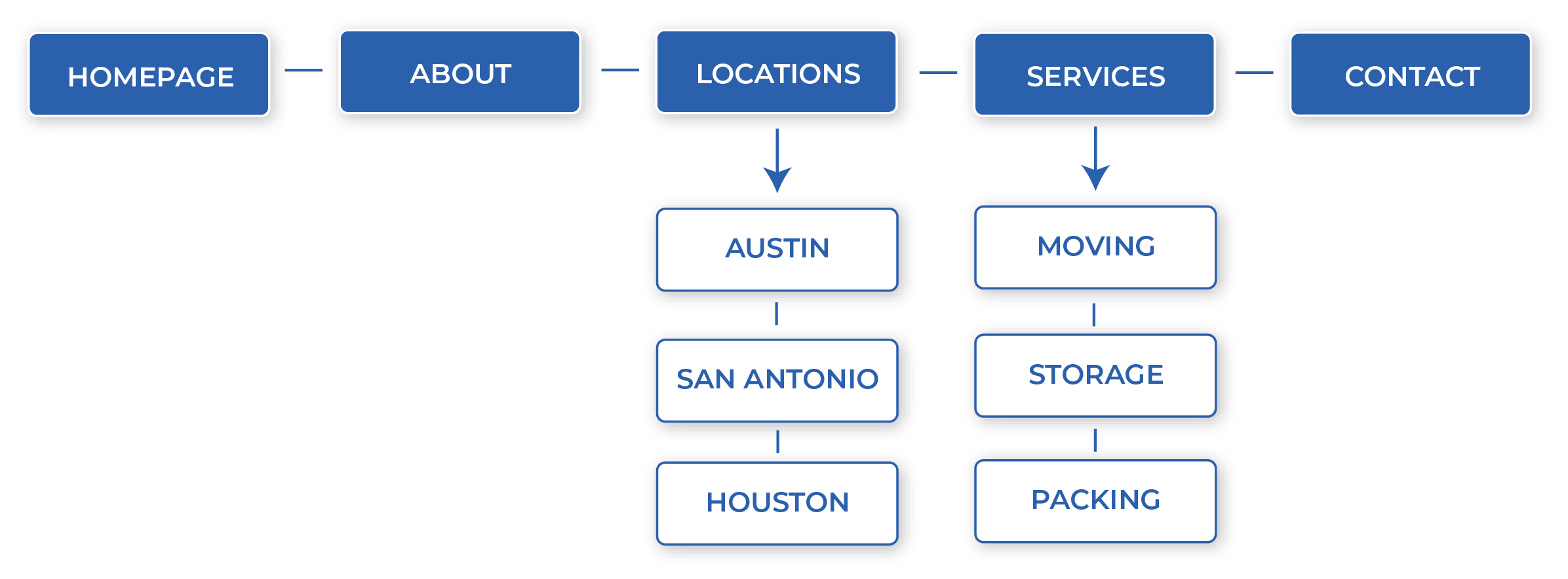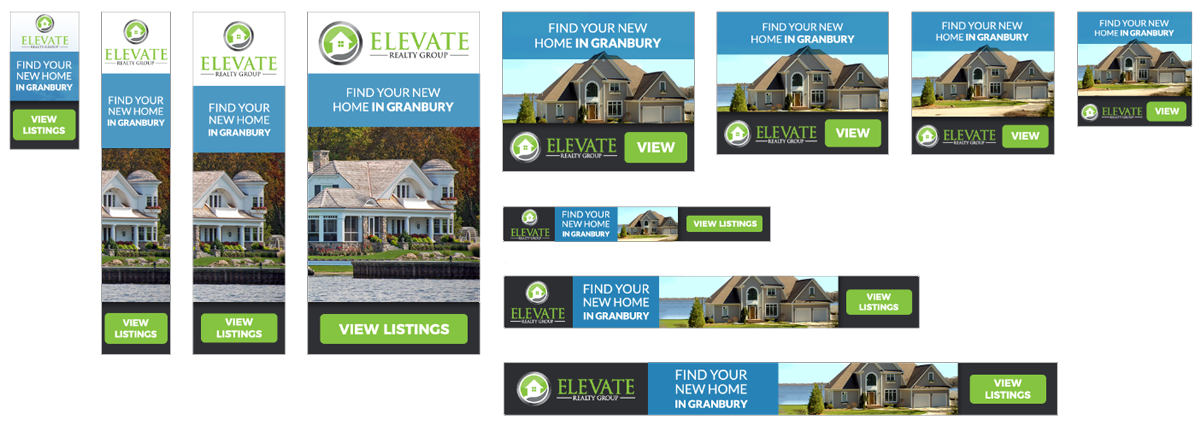Working in small, cross-functional teams
Geek Powered Studios was a relatively small marketing agency, which meant frequent collaboration between employees and different displicines. Once a client signed on for marketing services, they would be assigned a team based on whoever had the most available bandwidth.
Each GPS client had a team of:
- An account manager
- A SEO specialist/content writer
- A PPC specialist
- A web/graphic designer
Designing websites: establishing hierarchy

I also utilized sketched wireframes and low-fidelity mockups to help plan out how pages would be structured before applying the final visual stylings.

Designing websites: building a brand
Some of the tools I used to establish a brand and web presence included competive research, moodboard and color palette creation, and occasionally logo exploration, shown below.

Logo concepts and moodboard for an interior designer, inspired by plants and a love of the Southwest
Increasing conversions with digital advertisting
Designers at GPS also worked closely with the PPC specialists to create and test differnet types of display and social ads. These are the types of ads you might notice while on a news website or scrolling through Facebook.
Ads would be driven to the client's new website to increase visibility and gain more customer leads. My teammate and I would often A/B test different images (such as a different house photo) or different copy to see what would perform better and get more clicks.

Examples of different sizes/configurations for display ads

Examples of a display ad in context
Fielding a variety of design requests
Working in a small agency with a wide range of clients also meant that I took on a range of projects. Although my main job was designing websites, I also designed for other marketing channels.
A few other examples of marketing collateral I've created:
- Landing pages (single-page websites)
- E-commerce sites
- Email campaigns
- Organic social posts
- Trifold brochures
- Newsletters, flyers, and infographics
